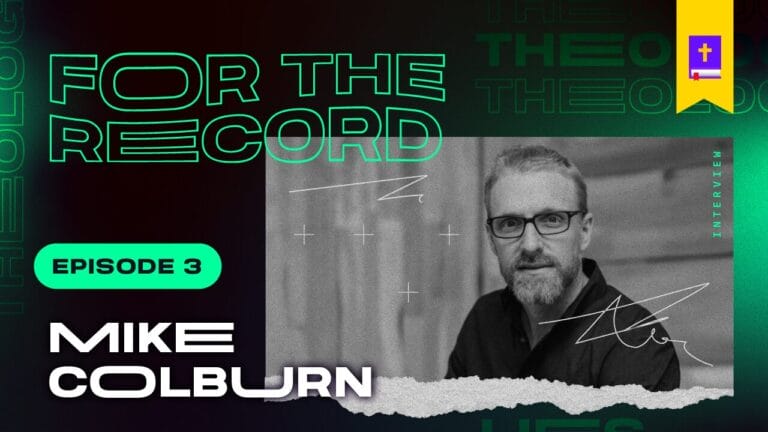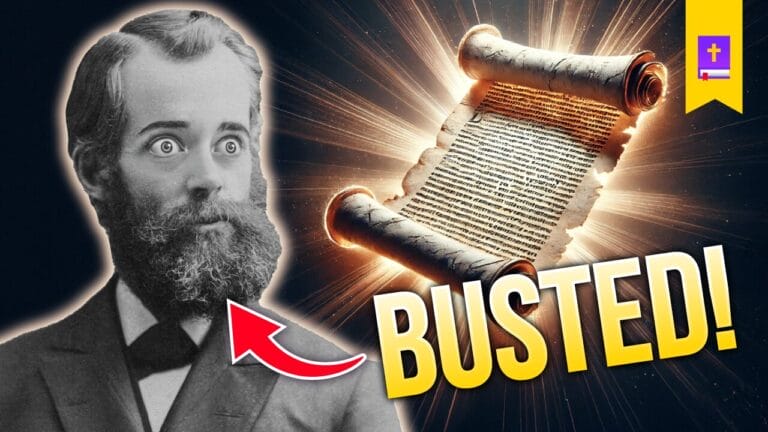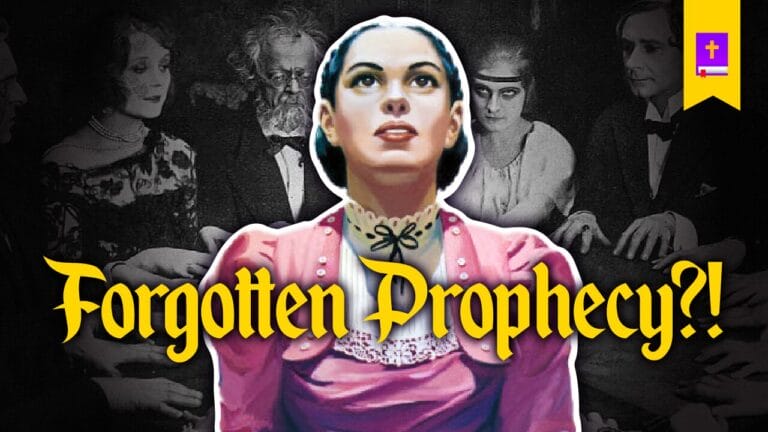Central to Seventh-Day Adventism is their interpretations of Daniel and Revelation. Because they are a movement built on eschatology, if they are off on any of their hypotheses, their entire system collapses. This is why they hold to their eschatological viewpoints so strongly in contrast to Christians that recognize there are a number of moving parts in this area and that the foundation of the Christian faith is not dependent upon the apocalyptic portions of scripture.
Ellen G. White, who the SDA Church upholds as divinely inspired and correcting of inaccurate interpretations of scripture, claimed that the Whore of Babylon refers to Roman Catholicism and her whore children are Protestants. Babylon supposedly represents a religious organization because John personifies it as a woman and Ellen claimed that an unpure woman in scripture is a defiled religious body full of confusion.
Ellen White was primarily influenced by a Millerite minister named Charles Fitch who, during the Millerite days, preached one of the most popular Millerite messages ever titled “Come Out of Her My People.” A phrase that remains commonplace in Seventh-Day Adventism to this day. SDA historian George R. Knight speaks on this in his book A Search for Identity: The Development of Seventh-day Adventist Beliefs where he writes:
Up through the summer of 1843 the Millerites had generally identified Babylon (in harmony with most Protestants of the day) as the Roman Catholic Church. Fitch would revise that perspective. After equating Babylon with the antichrist, Fitch went on to suggest that “whoever is opposed to the PERSONAL REIGN of Jesus Christ over this world on David’s throne, is ANTICHRIST.” That, he held, included both Roman Catholics and those Protestants who rejected the teaching of the premillenial second coming of Christ. The Protestant churches had fallen in the sense that they, like their Catholic forerunner, had become oppressive and had denied Bible truth (“Come Out of Her,” 9-11, 16).
Then Fitch went on to proclaim “to come out of Babylon is to be converted to the true scriptural doctrine of the personal coming and kingdom of Christ.” He saw no way one could avoid the Advent truth and be a Christian.
George R. Knight, A Search for Identity: The Development of Seventh-day Adventist Beliefs, pg. 49
The problem with the SDA (as well as the Millerite) handling of the text is the total denuding of it from history—namely those that John penned the Revelation to. This doesn’t mean there isn’t any modern day application, but in order to correctly arrive at that, it’s imperative that a person know what the author intended to communicate to the original audience.
John uses Babylon as a metaphor of the city of Jerusalem. There are two important interpretive keys to remember regarding the Book of Revelation:
- Revelation is dealing with events “that must soon take place” (Revelation 1:1-3; 22:6, 10). It is not primarily prophesying about events thousands of years removed from the original audience.
- John is reflecting on the Olivet Discourse and has the judgment of Israel in AD 70 in focus. The only two verses in the Bible that merge Daniel 7:13 and Zechariah 12:10 are Matthew 24:30 and Revelation 1:7. In Matthew 24:30, Jesus is clearly talking about the destruction of the temple in the first century (Matthew 24:2, 16). John’s stated theme in Revelation 1:7 states that Jesus is coming in a cloud-judgment against those who crucified him—of which the New Testament ascribes to the Jews (Matthew 26:59, 66; 27:1; Mark 14:64; Luke 23:22–23; 24:20; Acts 2:22–23, 36; 3:13–15; 4:10; 5:28, 30; 7:52; 10:39; 13:27–29; 1 Thessalonians 2:14–15).
In Revelation 17:3-6 John sees a sinful Harlot upon a Beast. Since she sits on a seven-headed beast, some believe she represents the city of Rome—the seven heads representing the seven hills of Rome. Since Rome was referred to as “Babylon” in antiquity, they see Rome as a fitting figure.
However, since the beast itself represents Rome, it would be rather redundant to have the woman representing the same. The name “Babylon” does not historically belong to either Rome or Jerusalem, and thus cannot prove that the city is Rome.
We would argue that this Harlot is first-century Jerusalem, based on:
- Revelation 14:8 calling Babylon “the great city.” In the first mention of “the great city” in Revelation 11:8, this indisputably refers to Jerusalem, “where also our Lord was crucified” (Luke 9:31; 13:33–34; 18:31; 24:18–20). Her greatness highlights her covenantal status in the Old Testament (Jeremiah 22:8; Lamentations 1:1).
- The Harlot is filled with the blood of the saints (Revelation 16:6; 17:6; 18:21, 24). With the outbreak of Nero’s persecution, which commences just prior to John penning the Revelation, Rome is stained with the saints’ blood.
Throughout Acts, Jerusalem appears as the persecutor and Rome as the protector of Christianity (Acts 4:3; 5:18–33; 6:12; 7:54–60; 8:1; 9:1–4, 13, 23; 11:19; 12:1–3; 13:45–50; 14:2–5, 19; 16:23; 17:5–13; 18:12; 20:3, 19; 21:11, 27; 22:30; 23:12, 20, 27, 30; 24:5–9; 25:2–15; 25:24; 26:21).
Yet, in the Olivet Discourse, Jesus rebukes Jerusalem (Matthew 23:34–7), before his stoning Stephen also rebukes Jerusalem (Acts 7:51-2), and Paul warns of Jewish persecution in 1 Thessalonians 2:14–16. - The Harlot’s dress mirrors the Jewish Levitical priesthood colors of scarlet, purple, and gold (compare Revelation 17:4–5 with Exodus 25:2-4; 26:1, 31, 36; 27:16; 28:1–2, 5–12, 15, 17–23, 33). She even has a blasphemous tiara on her forehead, which reads: “Mystery, Babylon the Great, the Mother of Harlots and of the Abominations of the Earth” (Revelation 17:5). This is in contrast to the holy tiara that the Jewish priest wore that read “Holy to the Lord” (Exodus 28:36-8).
- Rome was never God’s bride thus Rome cannot commit adultery against God. But Jerusalem was God’s wife (Isaiah 1:21; 57:8; Jeremiah 2:2, 20; 3:1–20; 4:30; 11:15; 13:27; Ezekiel 16; Hosea 2:5; 3:3; 4:15), and regularly we’re told in scripture the she committed adultery against him (Isaiah 1:21; 57:8; Jeremiah 2:2, 20; 3:1–20; 4:30; 11:15; 13:27; Ezekiel 16; Hosea 2:5; 3:3; 4:15). The Harlot imagery better suits an adulterous wife, such as Jerusalem.
Revelation designates the bride as the “New Jerusalem” from heaven (Revelation 21:2). We see at least five contrasts in this vein:
- John introduces the Harlot in the same way he introduces the bride (compare Revelation 17:1 with Revelation 21:9).
- The two women have a contrasting character: “Come, I will show you the judgment of the great Harlot who sits on many waters” (Revelation 17:1). “Come, I will show you the bride, the Lamb’s wife” (Revelation 21:9).
- The two women appear in contrasting environments (compare Revelation 17:3 with Revelation 21:10).
- John focuses on the dress of both women making a contrast (compare Revelation 17:4 with Revelation 19:8 and 21:11).
- John also contrasts their names. Earlier in Revelation he calls earthly Jerusalem by pagan names compatible with the designation “Babylon.” In Revelation 11:8 he describes her as “spiritually Sodom and Egypt.” Isaiah identifies Jerusalem as Sodom and Gomorrah (Isaiah 1). The idea being that rather than conducting herself as the faithful wife of God, she has become like one of God’s enemies (Sodom, Egypt, Babylon, etc.).
The fact that the Harlot sits on the seven-headed Beast doesn’t indicate her identity as Rome, but her alliance with Rome against the Christian church. The Jews demanded that Christ be crucified (Matthew 27:24–25; John 19:12–15; Acts 2:23), constantly persecuted Christians (Matthew 23:37; Acts 8:1; 1 Thessalonians 2:14–17), and/or provoked the Romans to do so (Acts 12:1–3; 17:5–7).
It is for these reasons that we believe the historical and biblical evidence lead to the Harlot representing Jerusalem. John contrasts the Jerusalem below with the Jerusalem above just like we see in Hebrews 12:22 and Galatians 4:25–26. The Jerusalem below has forsaken her husband by denying the Messiah.
John is dealing with Jerusalem, utilizing the imagery of Babylon to do so. She is the new enemy of God, even referred to as “a synagogue of Satan” (Revelation 2:9; 3:9) and “Egypt” (Revelation 11:8). This is much like Isaiah calling Israel Sodom and Gomorrah (Isaiah 1:10) and Ezekiel calling her the sister of Sodom (Ezekiel 16:49).
It is with that backdrop in mind that one can deduce the modern application of Babylon. Babylon is simply a picture of the worldly system—the Kingdom of Darkness that all sinners are born slaves in (John 8:34; Romans 6:20; Ephesians 2:1-3; Colossians 1:13). The persecution of the early church by Jerusalem is a proper picture of the trials and tribulations Christians face in a world that is hostile to them. They are called out from that system and transferred into Christ’s Kingdom (Colossians 1:13). Which is why Jesus taught his followers to not be shocked when the world hates them because it hated him first (John 3:20; 15:18). This is intimately connected with Revelation’s teaching about the “remnant.”
Babylon is not Roman Catholicism or Protestantism and this is slander on the part of the Seventh-day Adventist Church toward Christians.










